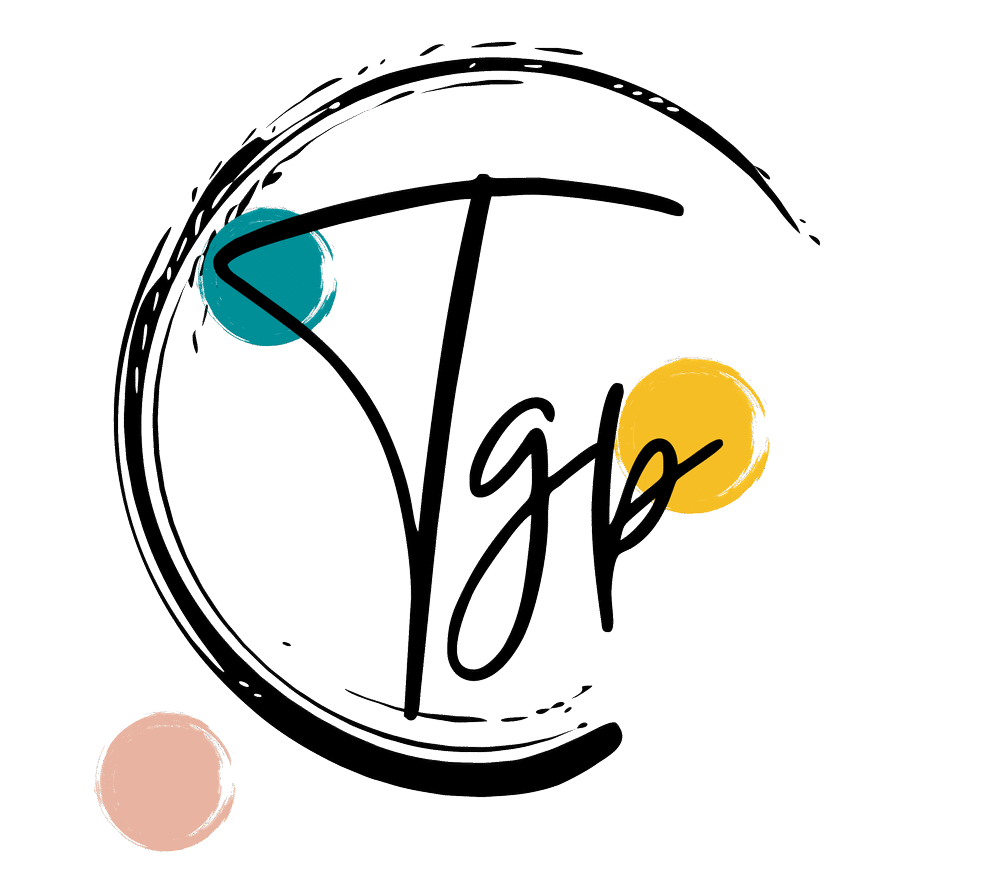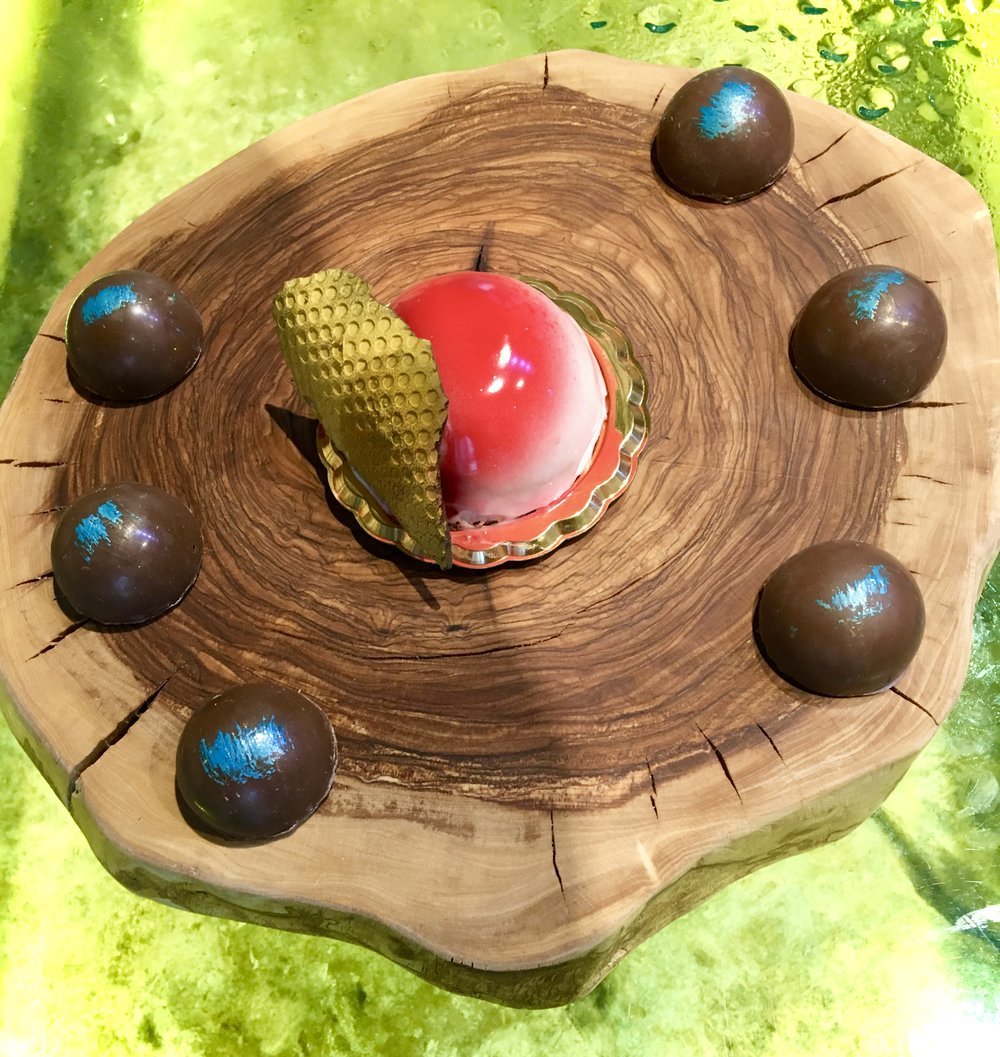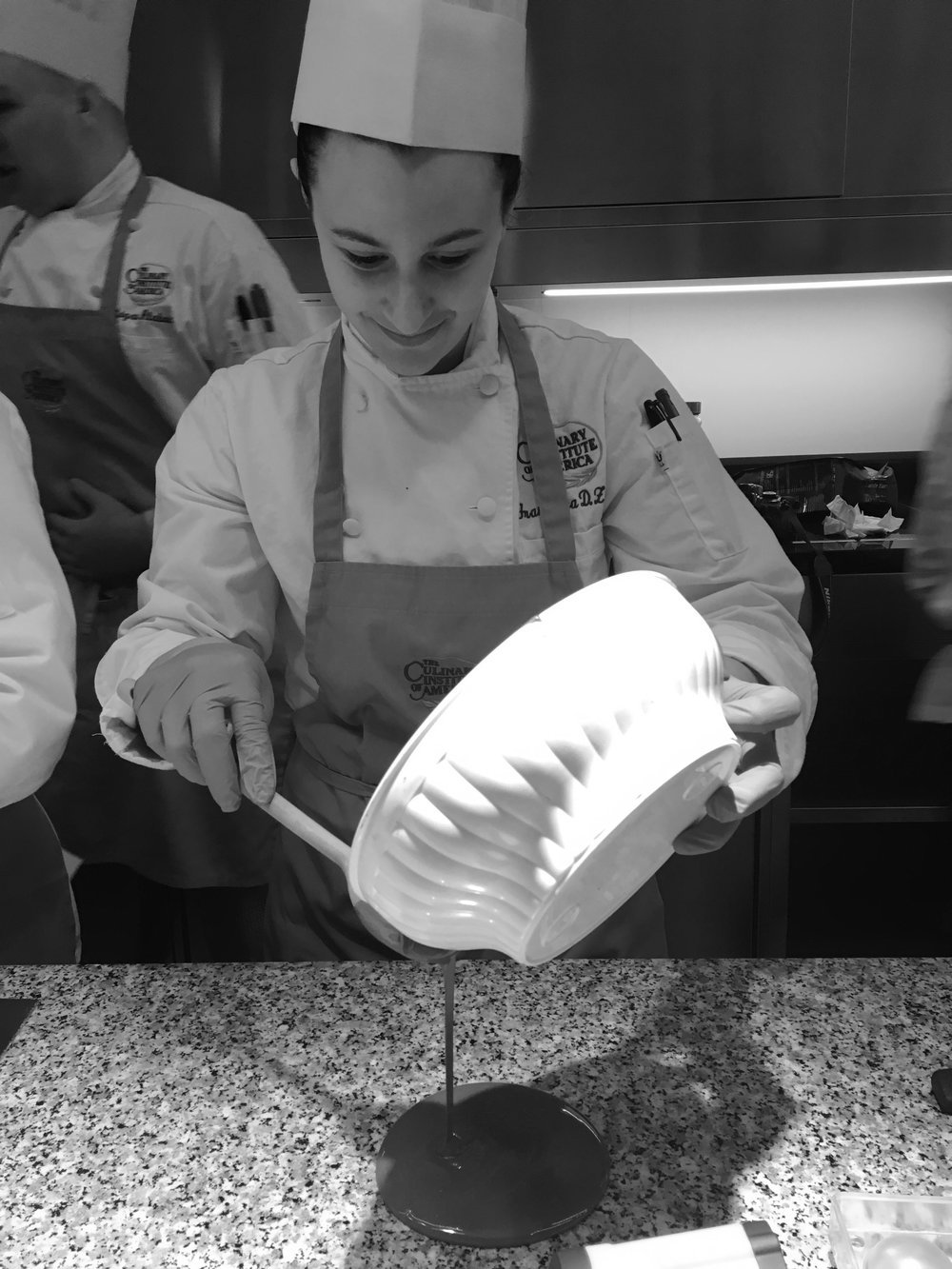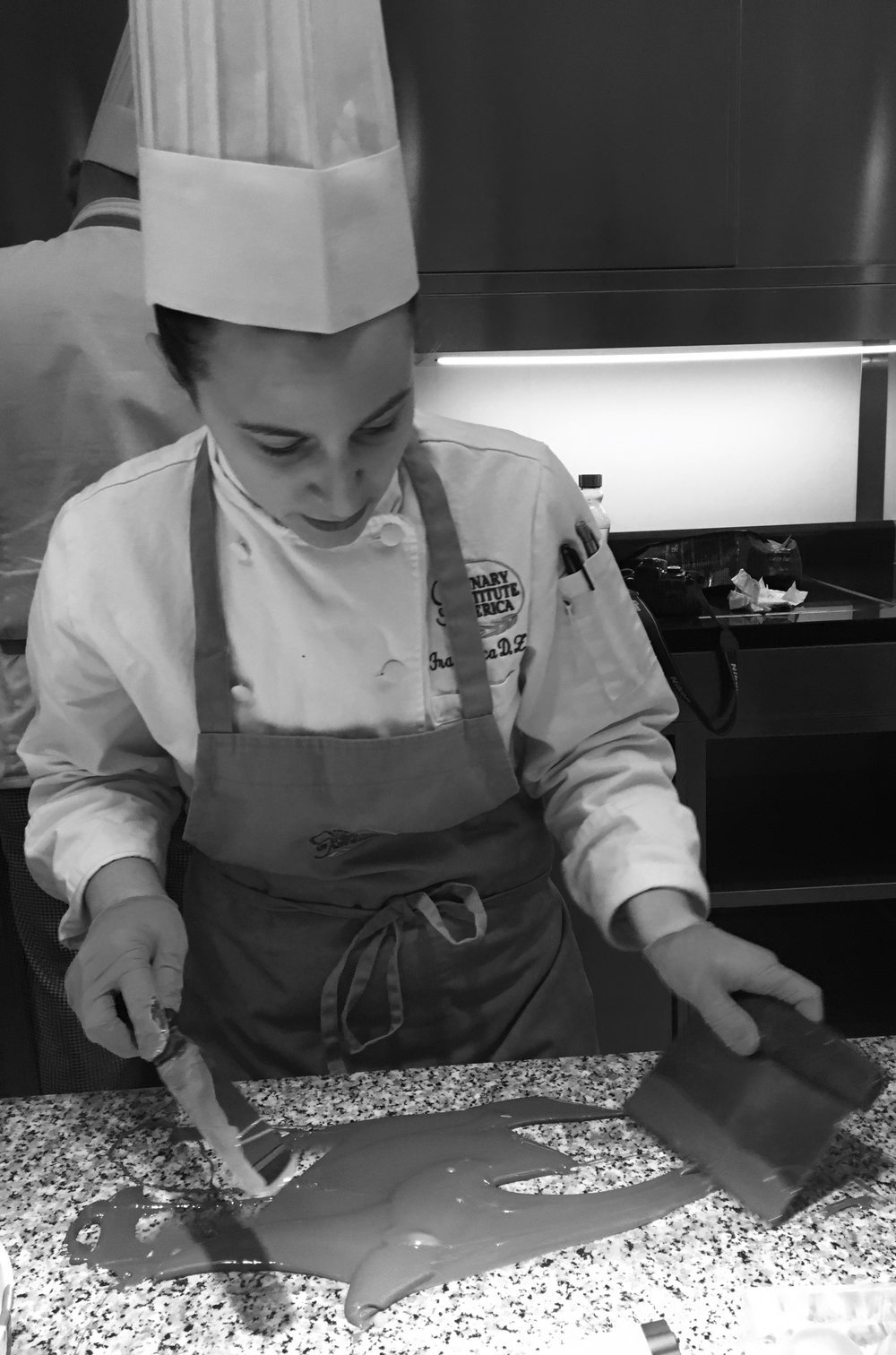Chocolate Fanatics
I cannot say that I have ever tempered chocolate before. Maybe when I was in high school I tried to pour melted chocolate into a mold and call that tempered, but now I know the real deal. No wonder chocolate is such a crafted confection; it takes a lot of patience and efficient effort to make it perfect. The best part about this process was that as a past culinary student I have never seen chocolate done before. I even remember saying to myself as a college freshman, how I didn’t want to go into pastry because I didn’t want to learn the art of chocolate. Sometimes we ought to kick ourselves for judging too soon. The process starts and finishes as follows…
to begin:
dark chocolate must be 45 degrees celcius.
The chocolate is poured directly onto a cool surface like granite or marble. Only about a third of what is in the bowl.
to finish:
little by little bring the chocolate down to 32 degrees celsius.
With quick motion toss the chocolate around the counter with an offset spatula and bench scraper. Make sure you have an infrared thermometer to check the temperature of the chocolate. Once it gets down to temp you must scrape it back into the bowl, check the temperature, and repeat the process with another third of the chocolate until the temperature is adjusted to tempered chocolate.
After the chocolate was tempered, we poured it into molds, turned them upside down, and shook out the excess chocolate. Perfectly tempered chocolate will stick to the mold, harden, and create the outer shell. After drying upside down, we add the fillings. The chocolates I made had a butter ganache filling, but some others contained cocoa- butter saffron, a parmesan pancetta ganache, and praline chocolate ganache. Once filled, the chocolates are sealed with another layer of chocolate and put in the fridge to set.
***to take chocolates out of the molds, bang them onto the counter.
All over my Instagram feed I see gloss covered cakes and petite fours and wonder how hard it is to make those desserts. These types of cakes are usually mousse cakes covered with a glaze made of glucose syrup and condensed milk, to create that mirror-like sheen. I had no idea I would get to make my own mini version in class and had the absolute best time coming up with a design. The best part was getting to spray the mini cake with an edible spray paint. I knew I always had a knack for pastry!



